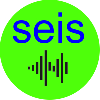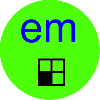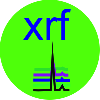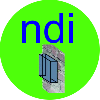Geophysical Instruments
exploration, near surface and marine instruments

Method: seismology and seismic exploration
Seismology: study of natural (earthquakes) and man-induced ground and subsurface waves.
Seismology refers to the study of how energy, in the form of seismic waves, moves through the Earth's crust and interacts differently with various types of underground formations.
In 1855, L. Palmiere developed the first 'seismograph', an instrument used to detect and record earthquakes. This device was able ....
...continue reading
PASTE RESPONSIVE AD
Seismograph
Seismic Instruments examines a wide diversity of geophysical instruments: seismometers,
computerized digital seismic stations, ocean bottom and borehole seismic
stations, automation of geophysical monitoring, strainmeters and tiltmeters.
Marine and Land seismographs. Multi-channel seismograph for LVL and
engineering seismic applications. Exploration seismograph SUMMIT X
Stream Pro Value quality seismograph for engineering application.
A seismometer is an instrument that measures motion of the ground,
caused by, for example, an earthquake, a volcanic eruption, or the
use of explosives.Exploration seismograph SUMMIT II Ex Intrinsically
safe seismograph for use in underground mining. The traditional compact
24-channels ...A seismograph is a device used for recording earth
tremors. Basically, it is a heavily weighted horizontal rod (pendulum)
suspended from a pole.
Read about seismograph

Geoelectrical Instruments ERT
Geoelectrical methods are used for mapping the depth of soils and rock. It involves
placing stakes in the ground and measuring electrical resistance.
extensively in groundwater mapping for investigation of the vulnerability
of aquifers and shallow aquifers themselves.
Read about Geoelectrical
PASTE RESPONSIVE AD
Electromagnetic Induction - EM
EM devices can simultaneously examine soil conditions and locate objects found
beneath the surface of the earth spatially, but do not provide good
depth information. The basis of the electromagnetic technique is the use of a coil with an alternating current circulating within it.
Read about Electromagnetic
Instruments
Electromagnetic Induction - EM
EM devices can simultaneously examine soil conditions and locate objects found
beneath the surface of the earth spatially, but do not provide good
depth information.
Read about Electromagnetic
Instruments
Electromagnetic Induction - EM
EM devices can simultaneously examine soil conditions and locate objects found
beneath the surface of the earth spatially, but do not provide good
depth information.
Read about Electromagnetic
Instruments
Electromagnetic Induction - EM
EM devices can simultaneously examine soil conditions and locate objects found
beneath the surface of the earth spatially, but do not provide good
depth information.
Read about Electromagnetic
Instruments
Electromagnetic Induction - EM
EM devices can simultaneously examine soil conditions and locate objects found
beneath the surface of the earth spatially, but do not provide good
depth information.
Read about Electromagnetic
Instruments
Electromagnetic Induction - EM
EM devices can simultaneously examine soil conditions and locate objects found
beneath the surface of the earth spatially, but do not provide good
depth information.
Read about Electromagnetic
Instruments








